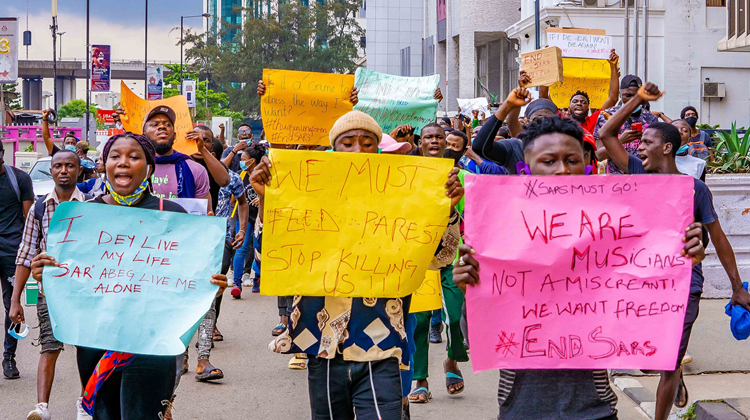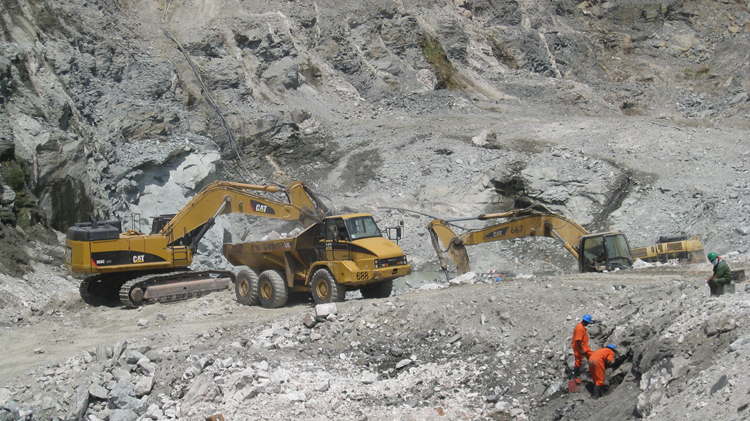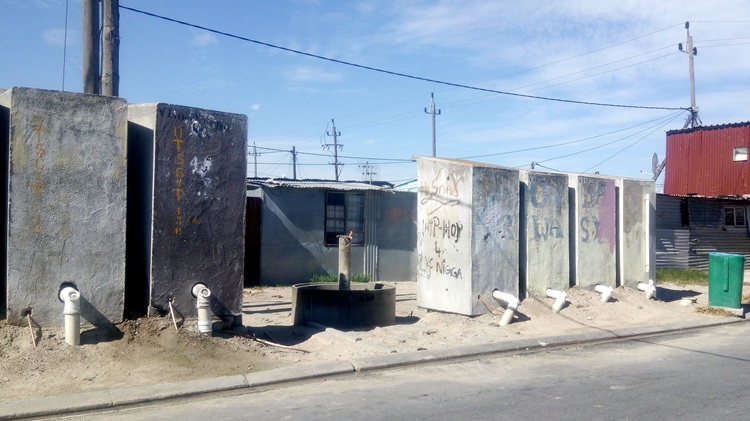South Africa and Nigeria need divergent strategies for the informal sector

Understanding how countries navigate the informal sector sheds light on broader debates around inclusion, state capacity and growth.
Nigeria and South Africa are Africa’s largest economies, and their future development has a significant impact on their sub-regions and the continent as a whole. The African Futures and Innovation team at the Institute for Security Studies (AFI-ISS) recently completed and presented an updated forecast for Nigeria to the office of the Vice President in Abuja, as well as presented an updated forecast for South Africa at a closed, expert meeting hosted by InTransformation and the Gordon Institute for Business Science.
In completing these forecasts, the team was struck by the evidence of lacklustre development in Southern Africa compared to West Africa. As one metric of slow growth, Southern Africa registered the highest unemployment rate globally at 33.2% in 2024, using data from the International Labour Organisation (ILO). Eswatini, South Africa, and Botswana rank 1st, 2nd and 5th in the world on unemployment rates. In South Africa, the previous systems of mining, education and business were premised on the extraction of maximum profits and burdened the country with huge inequalities. With poor-quality education and limited entrepreneurship, employment is particularly low, and inequality is exceptionally high. In fact, on both these counts, South Africa fares the worst globally.
Southern Africa registered the highest unemployment rate globally at 33.2% in 2024, compared to West Africa at 2.9%
Nominally, West Africa does better than other African regions in terms of employment, mainly because the ILO definition of employment includes persons active in the informal sector, where livelihoods are fragile and uncertain. As a result, the ILO estimates unemployment in West Africa at 2.9%, whereas Central, East Africa and North Africa experienced rates that were more than three times higher.
The reason for the low estimate is that West Africa has one of the largest informal sectors in Africa, and its working poverty levels are significantly higher at 23.4% in 2024, meaning that even those with jobs in the formal sector often receive poverty wages or below-poverty wages.
A key contributing factor to low employment in Southern Africa is the region’s relatively smaller informal sector, which provides less of a cushion against unemployment compared to other parts of the continent. The region's low employment levels are also linked to generally high levels of inequality. Labour market participation rates only returned to pre-pandemic levels in 2023, underscoring the significant disruption caused by COVID-19.
The reason for Southern Africa’s smaller informal sector is rooted in its historically extractive policies based on cheap labour and minerals. The region only recently achieved its transition to majority rule, and with ruling parties heavily infused with ideological models from several decades ago, government offers little room for self-help and is often hostile to the private sector. As a result, economic emancipation has not yet taken place. Governments promise to provide for their citizens, but rarely do.
Economic ideology in Southern Africa is compounded by the centralised, monopoly structure of the South African economy, in particular. Thus, big farming, big retail and big manufacturing limit opportunities for the informal sector and small businesses. As a result, organisations as diverse as the Competition Commission, the World Bank and the OECD have pointed to the need to unlock the potential of small businesses and entrepreneurship.
In AFI-ISS modelling, South Africa is forecast to deviate from the broader trend of a steady decline in informality. While other countries are generally projected to see a gradual reduction in the informal sector, both as a share of GDP and regarding labour force participation, South Africa is likely to experience an increase. This is primarily driven by the business-as-usual forecast of slow economic growth over the next decade, averaging 2.4%. Notably, in 2023, the informal sector in South Africa accounted for just 34% of the labour force, significantly lower than the continental average of 86%. It is 93% for Nigeria. As a result, South Africa has a particularly large Not in Education, Employment, or Training (NEET) population.
At low levels of development, the informal sector is generally much less productive than the formal sector, but the gap typically reduces as countries move up the income ladder. At higher levels of development, a large informal sector often reflects a determined effort to avoid regulation compared with being survival-oriented at low levels of development. In high-income countries, productivity in the informal sector could, in select examples, be similar to that in the formal sector, as the primary orientation is often not survival but regulatory avoidance. Therefore, productivity in the informal sector in a country such as Italy or Greece, where the illicit economy is large, is unlikely to differ from that in the formal sector.
Irrespective of the level of development, a large informal sector is costly for society and constrains sustainable development. Workers active in the informal sector do not contribute to direct taxes (as they are not registered to pay personal or company tax), but persons in the informal sector still require and use infrastructure such as roads. A large informal sector, therefore, puts an additional burden on the services that governments have to provide and congests public infrastructure without contributing to either, except through indirect taxes such as value-added and service taxes. However, this drag is balanced by the extent to which it absorbs people who would otherwise not earn any income.
The ILO data on unemployment in Africa mentioned earlier is therefore quite misleading without appropriate context, as poignantly revealed across 39 countries surveyed during Afrobarometer’s Round 9 (2021-2022) that identified unemployment as the leading policy priority for youth aged 18 to 35, significantly more than concerns about economic management and health.
This sets up a counterintuitive but important insight: while informality is typically associated with poor working conditions, South Africa and Nigeria face opposite challenges in this regard. For South Africa, the formal sector is capital-intensive and not job-rich. It creates limited employment opportunities, while the informal sector is too small to absorb the country's large unemployed population. As a result, many people are excluded. South Africa needs to allow an expansion of its informal sector as one of a host of measures to soak up unemployment and reduce inequality in the short term by providing at least some form of livelihood, even as the country ramps up growth.
South Africa needs to allow an expansion of its informal sector as one of a host of measures to soak up unemployment and reduce inequality
In Nigeria, the informal sector is extremely large, hiding widespread underemployment and low productivity. Its size results from a complex combination of economic, institutional and structural factors. Although unemployment rates appear low, most jobs are precarious and unregistered. This weakens the state’s ability to collect taxes, regulate economic activity and provide quality services. The country has some of the lowest tax-to-GDP rates globally, with a large portion of its taxes not being collected due to low levels of government efficiency and corruption. As a result, it needs a determined effort to crowd large portions of its informal sector into the formal sector. Such gradual formalisation, for example through the use of digital tax platforms and national ID systems, is not an easy task for any government, and is particularly challenging given low levels of trust in government in Nigeria. Countries like Rwanda have pioneered digital business registration and simplified tax regimes to draw informal workers into the formal economy, possibly offering useful lessons.
Nigeria needs a determined effort to crowd large portions of its informal sector into the formal sector
Overall, this argument may seem contradictory because informal jobs are typically low-wage and untaxed, lacking benefits, protections and long-term prospects. Yet, when formal jobs are scarce and economic exclusion is high, as in South Africa, informal work serves as a crucial safety net.
Should these divergent approaches, and various other measures towards rapid and inclusive growth, succeed, the South African economy could be 60% larger in two decades, and that of Nigeria, 50% larger. Realising this potential prosperity depends on context-specific, possibly uncomfortable approaches to human capital development, taxation and state-citizen trust.
The informal sector is no peripheral issue; it is central to questions of state capacity, inclusion and the future of work. How governments respond and whether they can harness informality as a bridge rather than a barrier is crucial to building economic resilience.
Note: The AFI-ISS is presenting its South Africa forecast publicly on 8th July 2025, and recently hosted a government workshop in Abuja where the team, together with partners, explored the forecasts for Nigeria in more detail.
Image: Orji Favour Chisom/Wikimedia Commons
Read the full recently updated country analysis of Nigeria and South Africa.






